Obesity-induced dysregulation of skin-resident PPARγ+ Treg cells promotes IL-17A-mediated psoriatic inflammation
- PMID: 37478855
- PMCID: PMC10527179
- DOI: 10.1016/j.immuni.2023.06.021
Obesity-induced dysregulation of skin-resident PPARγ+ Treg cells promotes IL-17A-mediated psoriatic inflammation
Abstract
Obesity is a major risk factor for psoriasis, but how obesity disrupts the regulatory mechanisms that keep skin inflammation in check is unclear. Here, we found that skin was enriched with a unique population of CD4+Foxp3+ regulatory T (Treg) cells expressing the nuclear receptor peroxisome proliferation-activated receptor gamma (PPARγ). PPARγ drove a distinctive transcriptional program and functional suppression of IL-17A+ γδ T cell-mediated psoriatic inflammation. Diet-induced obesity, however, resulted in a reduction of PPARγ+ skin Treg cells and a corresponding loss of control over IL-17A+ γδ T cell-mediated inflammation. Mechanistically, PPARγ+ skin Treg cells preferentially took up elevated levels of long-chain free fatty acids in obese mice, which led to cellular lipotoxicity, oxidative stress, and mitochondrial dysfunction. Harnessing the anti-inflammatory properties of these PPARγ+ skin Treg cells could have therapeutic potential for obesity-associated inflammatory skin diseases.
Keywords: IL-17A; PPARγ; Treg; free fatty acid; high-fat diet; immunometabolism; obesity; psoriasis; skin; γδ T cell.
Copyright © 2023 Elsevier Inc. All rights reserved.
Conflict of interest statement
Declaration of interests The authors declare no competing interests.
Figures


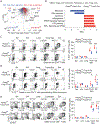
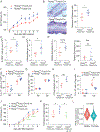
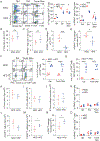
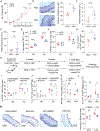
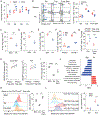
Comment in
-
High-fat diet depletes skin Treg cells.Nat Rev Immunol. 2023 Oct;23(10):616. doi: 10.1038/s41577-023-00924-3. Nat Rev Immunol. 2023. PMID: 37495727 No abstract available.
References
Publication types
MeSH terms
Substances
Grants and funding
LinkOut - more resources
Full Text Sources
Medical
Molecular Biology Databases
Research Materials

